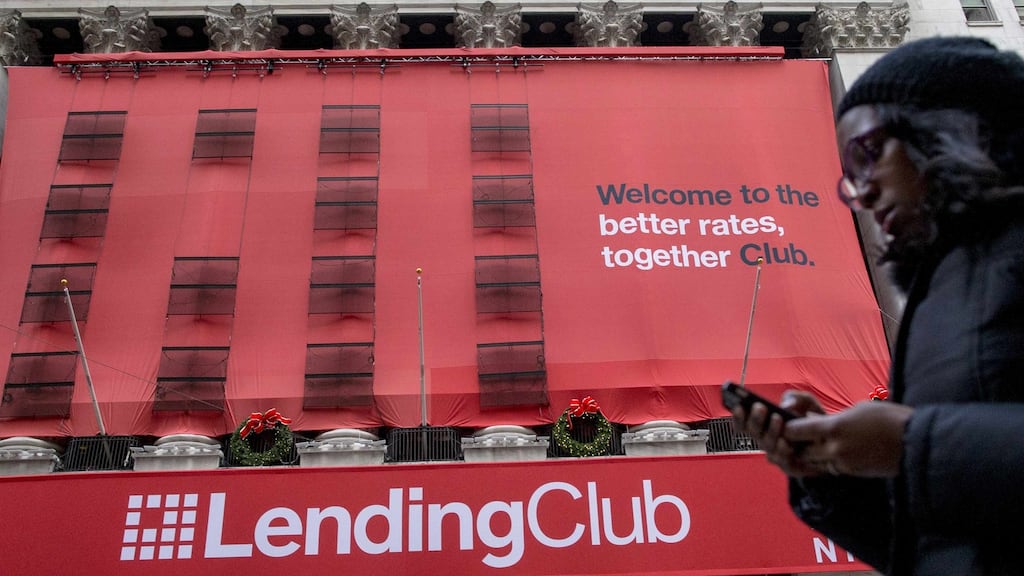Interest rates at record lows. Investors desperate for decent returns. A whizzy new way to make money by securitising risky consumer debt. Crash.
That is certainly a description of the US subprime mortgage craze of a decade ago — and the disaster that followed, after a collapse in house prices and a rise in loan defaults triggered a tidal wave of losses for banks around the world.
It could equally be a doomsday extrapolation of the distress evident today among US peer-to-peer, or “marketplace” lenders.
In mid-May, shares in Lending Club, the biggest US operator, halved after an employee fraud emerged and the chief executive resigned amid a conflict of interest row.
A few months earlier the reputation of the number two in the US market, Prosper, was hit when it was found to have lent money to one of the San Bernardino gunmen and suspected terrorists.
At the same time, loan losses have been edging up and the companies’ financial backers are showing signs of nervousness. Now both companies are eyeing capital raisings to shore up their finances.
At one level, it seems reactionary to question the P2P blueprint. These are innovative platforms that use smart technology to match investors and borrowers, skirting the risks — and regulatory burdens — of a big balance-sheet bank which keeps loans on its own books.
And more and more clients are falling in love with the model. In the first quarter of 2016 Lending Club lent $2.75bn, 68 per cent more than it did 12 months earlier. JPMorgan Chase is many times bigger but expanded its consumer lending by only 16 per cent.
Yet Lending Club, which had an $8bn valuation when it floated in late 2014 is worth less than $1.7bn today, reflecting mounting doubts about the sustainability of the P2P growth story.
The immediate issue is whether the platforms can find the funding to back future lending at the same kind of clip. Attracting additional money is crucial because the companies’ revenues are increasingly reliant on new lending. Platforms receive as much as 90 per cent of their fees on new loans, rather than from existing customers. Without new loans, revenue would plunge.
The original P2P model, which matched retail investors with retail borrowers, was straightforward. But platforms struggled to find enough cash from small investors to cope with rampant demand for credit. So they turned to institutional investors — and increasingly to banks that would repackage loan portfolios in the form of securitisations.
Altfi, the data provider, estimates US platforms last year received 20 per cent of their money from retail investors and 50 per cent from buy-and-hold institutional investors, with the remaining 30 per cent coming from securitisations.
It is here, following an increase in securitisation costs triggered by the Federal Reserve rate rise last December, and nervousness about the credit quality of some P2P loans, that the crunch seems to be taking place.
The parallels with the subprime crisis are clear.
First, P2P platforms, like the originators of subprime mortgages — and the banks that repackaged them — have no “skin in the game”. They originate loans to distribute them and have little reason to care whether the borrowers can repay.
Second, there is limited data on loan quality — P2P credit deals are audited, but only summarily.
And third, for the banks that are lending to hedge funds, who in turn are buying the P2P loans, there is scant information about loan collateral. Again, not unlike the poor quality, overvalued real estate underpinning many subprime loans in 2006.
There are potential fixes. Most urgent is the need for a mechanism to boost trust in credit quality. The US Global Debt Registry has launched a pilot scheme with some big investors to vet loan portfolios and collateral.
A more prudent balance of funding, with less reliance on flighty securitisation investors, less aggressive fee recognition, and maybe even a deliberate slowdown in loan growth, would also reduce risk in the sector.
The UK, where P2P was born with the creation of Zopa in 2004, seems to have a healthier balance of funding, though some operators may lately have embraced institutional money too enthusiastically. In addition, UK law allows the platforms to be pure matchmakers, whereas US platforms rely on an elaborate string of third-party banks and promissory notes, leaving investors exposed to counterparty risk and financial losses if the platform collapses.
On the plus side, the P2P sector is still pretty small, and with sensible de-risking, it will recover — at least until the interest rate cycle really tests the robustness of the model.
(- Copyright The Financial Times Limited 2016)










